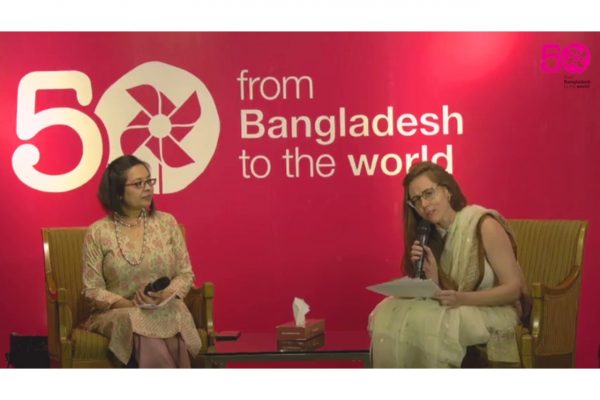The story of the flood, its people and BRAC- BRAC’s programmes reaches out to the flood affected regions in Bangladesh
Reading Time: 2 minutes
The pervasive torrential rains in the Bandarban, Cox’s Bazar, Sylhet, Chittagong, & Feni district of Bangladesh have left a significant number of people homeless and distressed in the past one week. Roads and railways communication network are left in devastating conditions which has made any kind of aid or assistance impossible to reach. Under such circumstances, BRAC’s Disaster, Management and Climate Change (DMCC) programme has geared up to challenge the extremes and reach out to those in dire need.
The pervasive torrential rains in the Bandarban, Cox’s Bazar, Sylhet, Chittagong, & Feni district of Bangladesh have left a significant number of people homeless and distressed in the past one week. Roads and railways communication network are left in devastating conditions which has made any kind of aid or assistance impossible to reach. Under such circumstances, BRAC’s Disaster, Management and Climate Change (DMCC) programme has geared up to challenge the extremes and reach out to those in dire need.
Due to heavy rainfall and upstream water:
- Approximately 2,500 people in the low land areas of Bandarban district have became homeless,
- 37 people have been reported dead due to hill slides caused by heavy torrential rainfall(Bandarban),
- 28 people have been reported dead due to landslides,
- 3 people have died due to lightning, and
- Around 9,000 families have been affected by the flood.
- In Cox’s Bazar district 47 people have been reported dead due to the heavy rainfall and wall collapse.
- In Sylhet district, 24 unions of Gwainghat, Jointapur, Companiganj and kanaighat upazila have been inundated.
- Rail communication from Dhaka and Sylhet with Chittagong has been disrupted because the rail line area at Sitakundo has been inundated with water and the rail bridge has become unstable.
- In Chittagong district, coastal low lying areas of Banshkhali, Anwara and Sandwip upazila are inundated as the ring embankment ruptured due to heavy rainfall.
- In Feni district, the embankment of Mohuri River is damaged due to heavy the rainfall over the last few days.
As an immediate response to such immense natural disasters, DMCC with the help of other programmes has begun to provide relief support to these affected communities. So far:
- 19 shelters have been opened in the Bandarban Pourashava, where all of these affected people have taken shelter.
- Approximately 5,778 people of the Sylhet District have been moved to the 69 shelters.
- The 58,000 people in the affected areas of Cox’s Bazar district have moved to the 137 shelters opened there.
- Since July 1st, a total of 260 families have been targeted in Cox’s Bazar, out of which 232 families have already received the relief fund of BDT 1,000 ($12) and the rest will receive assistance soon.
To ensure extensive support and a significant/long term impact, the distribution areas are being selected based on the most affected population staying at these shelters. Moreover, priority is being given to those families who have physically challenged members, pregnant women, elderly people, small children and are women-headed.
In addition to this support, BRAC’s Ultra Poor programme is providing relief to their affected clients. So far, flooding has affected 682 programme members in the Cox’s Bazar and Sylhet districts, and they have received emergency support from the Ultra Poor programme. BRAC’s Health programme is providing financial support to 522 pregnant women who need special attention and the 575 lactating mothers with newborns as per their needs.
The Disaster, Management and Climate Change programme was established in order to respond proactively to the increasing frequency and severity of natural disasters as well as other manifestations of climate change. It is a comprehensive programme which acts beyond relief and rehabilitation into institutionalized preparedness, risk reduction and management interventions as well as long term adaptation strategies.





